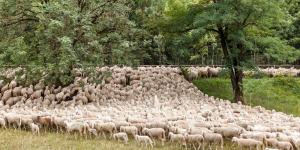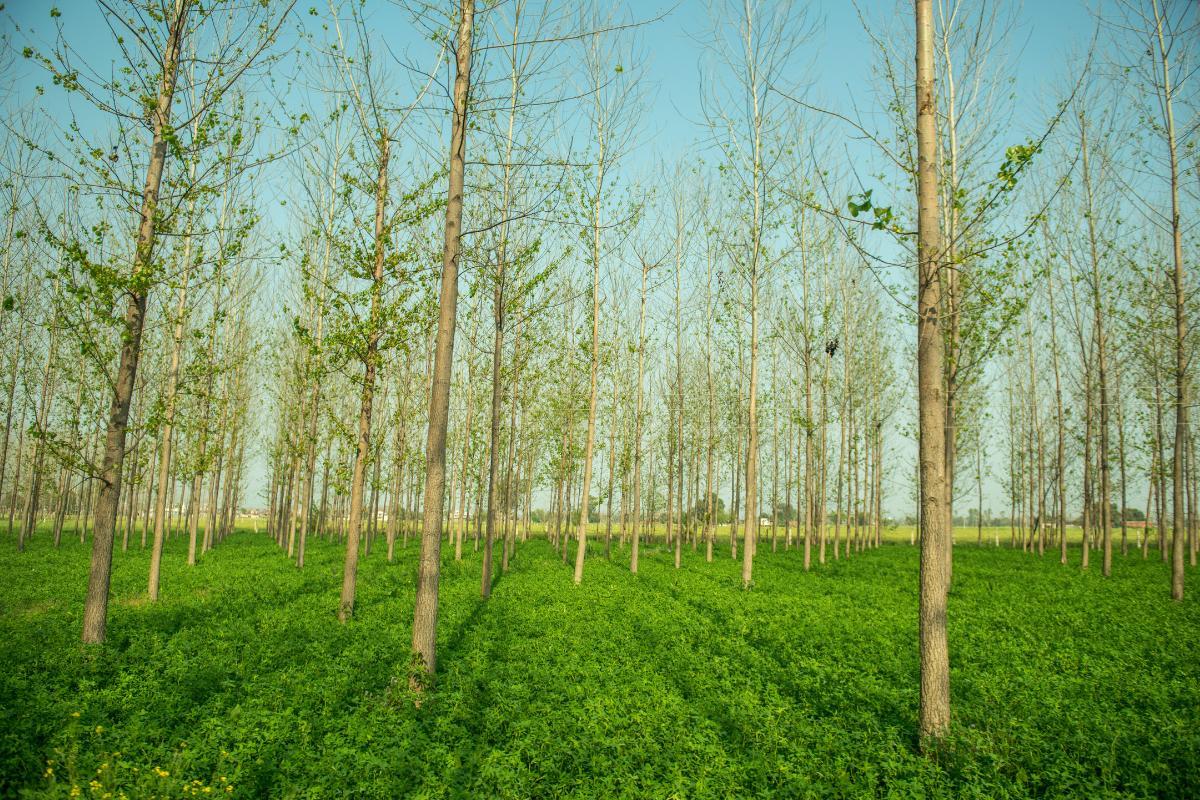What Is Agroforestry and Its Benefits?


Although the basic practice has been carried out for centuries, the concept of agroforestry was only formally conceptualized in the 1960s. The practice is a type of land management system whereby trees are planted near crops or land for pasture on various types of farm. There are many purposes for this practice, but they are generally designed to provide certain environmental, economic and social benefits. As environmental concerns become more prevalent in agriculture and forestry practices, agroforestry techniques are increasingly being used to promote sustainability.
At thedailyECO, we ask what is agroforestry and its benefits? In discovering the nature of agroforestry land management approaches, we can see how it might help to benefit both business and the environment.
What is agroforestry?
Agroforestry is a practice that combines elements of agriculture and forestry to create sustainable and productive systems. It is a type of land use management. These are the various approaches and processes we use to address the use of land. Since different types of land have different characteristics, taking an intelligent approach to how they are used can provide many benefits.
In agroforestry, trees, shrubs and agricultural crops are integrated in the same space. They are planned and managed in a way that can optimize land use. The aim of this practice is to take advantage of the positive interactions between the different components. In doing so, we can promote biodiversity, improve the productivity of the system and protect the land from various types of environmental impact.
Discover the different types of forest which may benefit from agroforestry approaches with our related guide.

Benefits of agroforestry
Now we know what is the concept of agroforestry, we can take a look at some of this specific benefits this type of land use management can provide:
- Crop diversification: the presence of trees and shrubs in the same agricultural system allows a variety of products to be grown. This contributes to food security and helps diversify income for various farmers.
- Soil conservation: the presence of trees and shrubs helps reduce soil erosion, improving its structure and fertility. Discover more about the effects of soil erosion with our article on what is soil science?
- Nutrient cycling: trees can act as sources of nutrients by releasing organic matter into the soil and improving nutrient availability for crops.
- Pest control: some trees and shrubs can act as shelters for beneficial insects or emit substances that repel pests. This acts as a natural pest control which reduces the need for more harmful chemical pest control options.
- Carbon capture: the presence of trees helps capture carbon from the atmosphere, in turn helping to mitigate the effects of climate change.
- Generation of wood and non-timber products: in addition to agricultural products, trees can provide wood, fruits, nuts or other non-timber products. This can help further diversify income for famers, but may also help to reduce pressure on natural forests.
- Habitat for wildlife: agroforestry creates more diverse habitats, benefiting local wildlife such as birds, insects and mammals. Choosing which types of tree are used can help influence the type of biodiversity in an area.
Silvopasture
Silvopasture is an agroforestry system that specifically integrates trees, pastures and livestock in the same land space. This practice seeks to optimize the interaction between these different components, providing benefits for both animal production and forest management. It is particularly important for grazing management of animals. Not all pastureland is equal when it comes to grazing, so silvopasture can help optimize grazing land.
Among the benefits that occur are providing shade for livestock, improving the quality of pasture, contributing to carbon capture and using the wood for various industries. It also helps to reduce the problems caused by open pasture systems. These open systems increase deforestation and decrease water supplies. Silvopasture can also help to rehabilitate woodlands which are otherwise not very useful.
Forest farming
Many of the different types of agroforestry use similar approaches to farmland and trees. Forest farming not only integrates trees and crops, but it uses a forest canopy to do so. This means they can grow certain crops which require shade provided by the trees to proliferate. This approach can use specially planted forests for this purpose, but they most commonly adapt existing forests.
The products developed in forest farming are usually non-timber forest products (NTFPs). These are plants and other biological materials which do not include the wood from the trees. It can include fruit and nuts from the trees, as well as fungi and other plants which grow in the shade of forests.
Forest farming can have varying levels of intervention. Sometimes the forest is kept as wild as possible with minimal intervention when growing plants and fungi. Others can be more intrusive and clear away certain plants to make way for others.
Learn about what are secondary forests in our related article.

Alley cropping
Alley cropping is one of the most common types of agroforestry. As its name suggests, it uses rows of trees (alleys) or shrubs which are planted along the side of various crop fields. They are done so at certain intervals, the size of which will depend on the types of tree and crops being grown.
There are many benefits of alley cropping. The trees can be used to help keep the soil healthy and add nutrients for the crops. It also helps to protect the integrity of the soil by preventing soil erosion. The trees can also affect the climate of the area by improving air quality, providing shade cover for the crops and other advantages. The trees themselves can yield a harvest, diversifying the income for the farmer.
Multistrata agroforesty
While forest farming uses the canopy to help produce various biological products, multistrata agroforestry combines even greater integration. With this type of agroforestry, various layers of vegetation provide benefits for each other. For example, trees can be planted at the top level, providing shade for some plants, but not for others which are protected by being lower down.
Since different crops benefit more from different land types, create different strata can help to make the most out of limited land. For example, tall trees can be planted at the top, smaller shrubs in the middle and herbs at the bottom. It is not a land management system which works for all farmland, but it can be of particular benefit for land with uneven topography such as mountainsides or other steep areas.

Riparian forest buffers
As we can see, the different types of agroforestry largely depend on the type of land which is being exploited or adapted. When there is a river or other bodies of water, agroforestry approaches can provide the maximum benefit for the land.
Riparian forest buffers use trees to act as a protective border for forests. As with alley cropping, the trees are there to help protect the land from soil erosion, something which can be particularly problematic on the banks of rivers and streams.
While most agroforestry processes use trees to protect crops, riparian forest buffers use the trees to protect the water. This helps to improve water quality and helps to filter river run off. This does not only benefit the waterways and the life they contain, but it helps to improve the overall biodiversity of the surrounding area.
Learn more about how rivers affect larger ecosystems with our article on what are river deltas and how are they formed?

Agroforestry systems in arid areas
Agroforestry systems in arid zones are approaches adapted for areas with dry climatic conditions and water scarcity. These systems seek to improve the sustainability of agricultural production by integrating trees, shrubs and crops to optimize water use, prevent soil erosion and provide multiple benefits. Some examples of these systems are efficient irrigation systems or drought-tolerant crops.
These examples show the versatility of agroforestry and how it can adapt to different climates, soils and land management objectives. The key is to design systems that maximize positive interactions between components, promoting long-term sustainability and productivity.
You can learn more about another type of agriculture which tries to use the same approach of optimization. This can be done with our article on what is agriculture?
If you want to read similar articles to What Is Agroforestry and Its Benefits?, we recommend you visit our Ecology (other) category.









